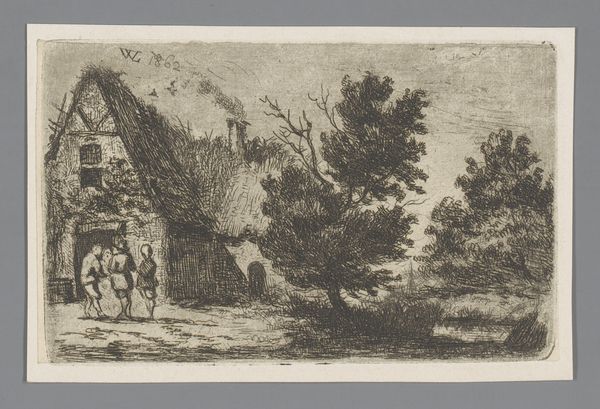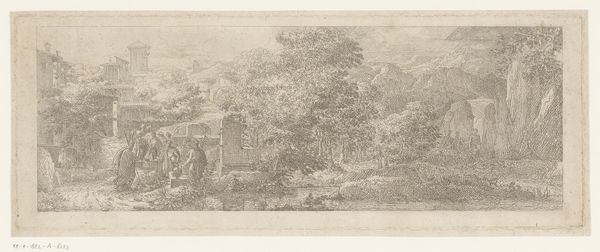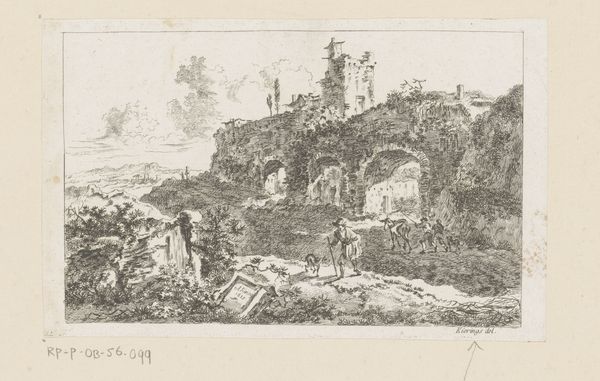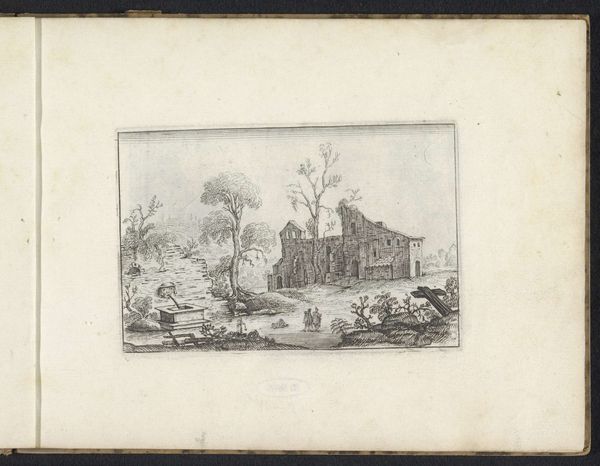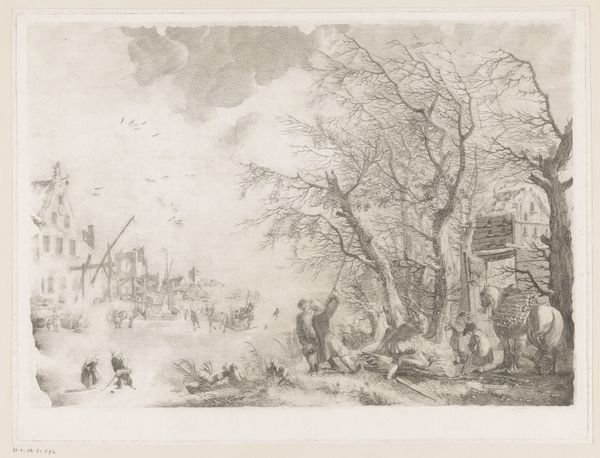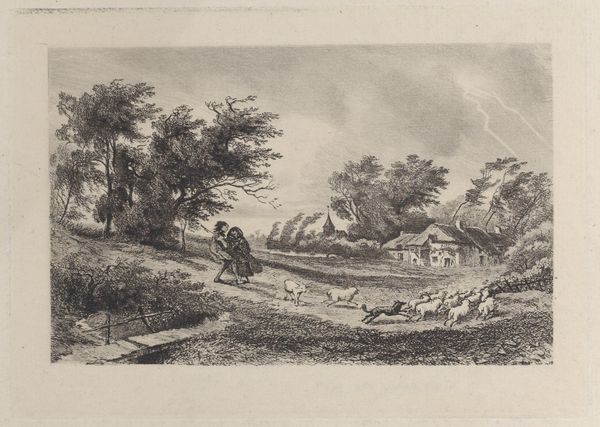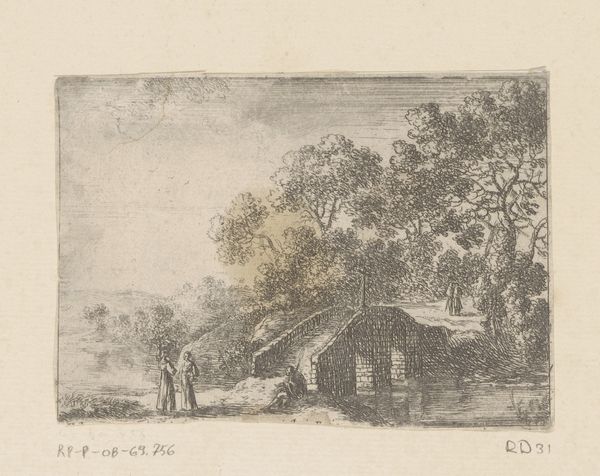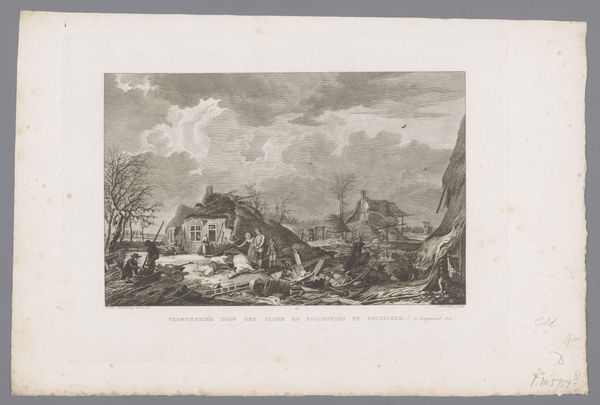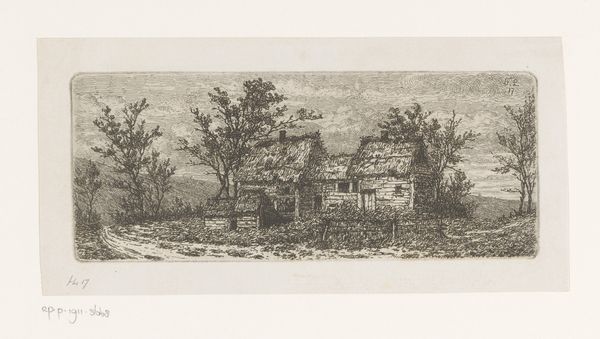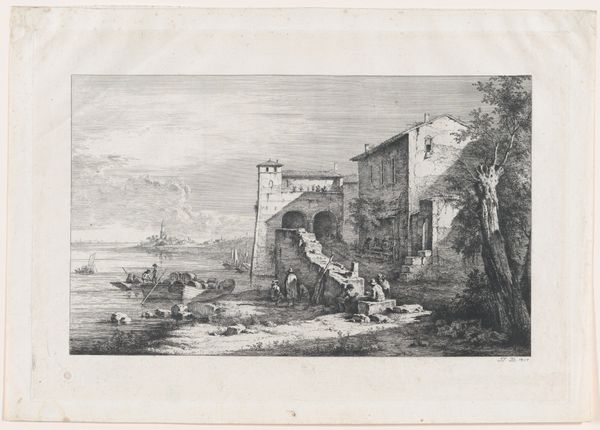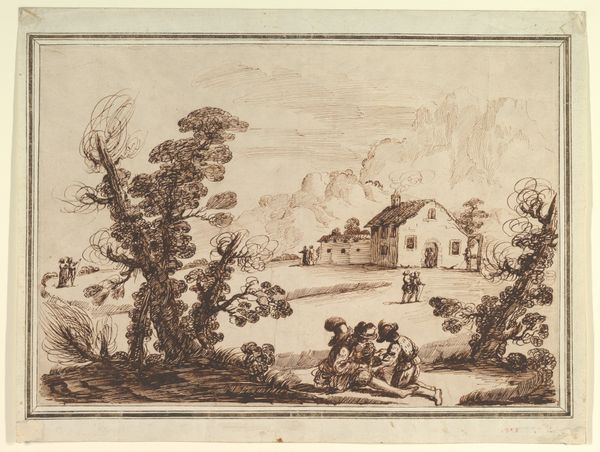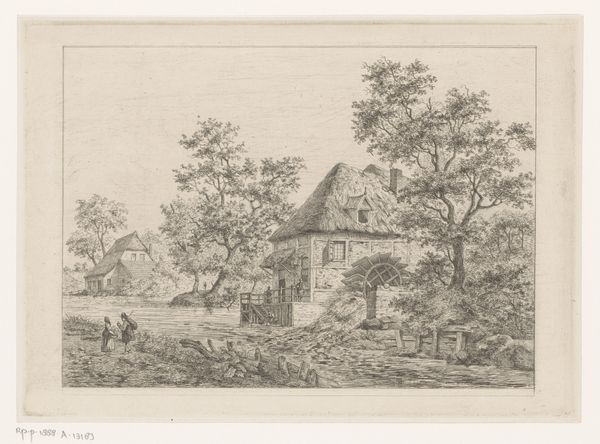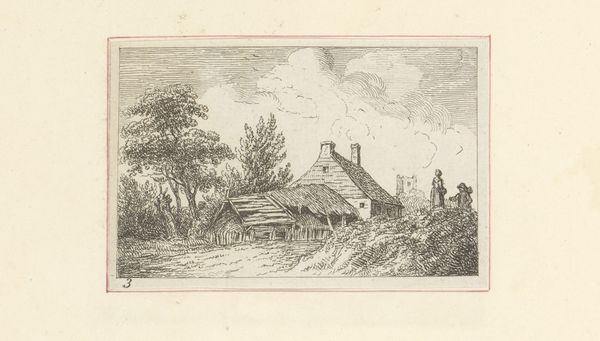
print, etching
# print
#
etching
#
landscape
#
genre-painting
#
realism
Dimensions: height 68 mm, width 110 mm
Copyright: Rijks Museum: Open Domain
Curator: Here we have Willem Linnig the Younger's etching, "Landscape with Four Figures Near a Farmhouse," dating back to 1862 and part of the Rijksmuseum collection. The detail achieved in such a modest format is striking. Editor: Immediately, I see a storybook scene, albeit rendered in a somber palette. There’s a sense of rusticity and perhaps hardship conveyed in the density of the etching and the almost sagging structure of the farmhouse. Curator: Indeed, Linnig's expert use of line and shading really drives the eye around the composition. Notice how the thatched roof, with its almost chaotic lines, contrasts with the relatively smoother texture of the walls and figures. The interplay creates a visual rhythm. Editor: The thatched roof immediately suggests the harvest and fertility cycle in rural society, that cyclical structure of hard labor and reliance on good yield to subsist throughout winter and prepare for the spring, the life-giving source for the people. I cannot unsee a preindustrial life embedded within this work. Curator: And the figures themselves – grouped near the entrance. One observes Linnig's command over proportion, despite the diminutive scale of the print. Their positioning also defines the human aspect, central but subtly nestled within nature's vastness. Editor: These figures, they might also echo themes of community and familial ties, crucial in such agricultural settings. Notice the little flock of birds towards the top, representing the sky as limitless—a spiritual or emotional liberation, which greatly contrasts the heavy, earthy house that roots people down on Earth. Curator: An astute point. From a formal standpoint, that scattering also serves as a counterpoint to the denser foliage surrounding the farm. There is an interesting structural dichotomy at play, pushing and pulling elements in calculated equilibrium. Editor: A fascinating juxtaposition, revealing both human connectedness and the imposing magnitude of the natural realm in the visual language of this time. These figures also reflect people being close to each other for safety. In the pre-industrial world, every stranger outside your tight group could be an existential danger, therefore, you have a village of people grouped close together, even metaphorically as we can find here. Curator: Linnig manages a surprising sense of depth using purely graphic means. Notice the subtly diminishing lines in the distant trees—the very economy of execution accentuates the feeling of recession. A skillful performance indeed! Editor: And the house at the centre of the entire display? What a heavy cultural value for us! It suggests family, protection, belonging—our most basic and deepest human yearnings, made visual for audiences through generations. Curator: Yes, after some considerations it has really offered a rather intriguing exercise in structural dynamics and formal balance. Editor: For me, too—but even more so, a timeless portrait of the delicate interplay between humanity and our most deeply symbolic dwelling spaces and surrounding contexts.
Comments
No comments
Be the first to comment and join the conversation on the ultimate creative platform.
